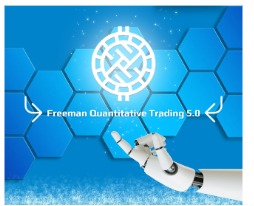Blockchain
World Quantum Computers and Blockchain Mechanism Analysis Report 2022: Discussions of Quantum-Enabled Blockchain Architectures Based on Quantum Random Number Generators and Quantum Key Distribution

The “The Quantum Threat to Blockchain: Emerging Business Opportunities” report has been added to ResearchAndMarkets.com’s offering.
This report identifies the challenges and opportunities that arise from the threat that quantum computers pose to the “blockchain” mechanism that makes cryptocurrencies viable as a form of money as well as playing an important role in future “smart contracts,” novel supply chain strategies and other innovative deployments of IT.
That quantum is a major threat going forward is beyond doubt. According to a recent study by the consulting firm Deloitte, approximately one-fourth of the Bitcoin in circulation in 2022 is vulnerable to quantum attack. The White House National Security Memorandum/NSM-10, released on May 04, 2022, indicated the urgency of addressing imminent quantum computing threats and the significant risks to the economic and national security of the United States.
Although the main focus of this report is on the quantum threat to the integrity of cybercurrencies, the applicability of blockchain (and therefore the threat of quantum) is much broader than the newer types of money. Blockchain technology has been proposed for a wide range of transactions, including insurance, real estate, voting, supply chain tracking, gambling, etc.
A quantum computer-compromised blockchain would allow eavesdropping, unauthorized client authentication, signed malware, cloak-in encrypted session, a man-in-the-middle attack (MITM), forged documents, and emails. These attacks can lead to mission-critical operations disruption, reputation, and trust damage, as well as loss of intellectual property, financial assets, and regulated data. Note that this report covers both technical and policy issues relating to the quantum vulnerability of blockchain.
As things stand now, blockchains are secured with relatively garden-variety encryption schemes. However, quantum computers will have the computational power to break these schemes as they grow in power. Predictions of when quantum computers will attain such power vary from five years to never, but, the threat hangs over the cryptocurrency industry as a whole and is a dampener to its prospects.
Quantum computers directly threaten classical public-key/private key cryptography blockchain technologies because they can break the computational security assumptions of elliptic curve cryptography. They also significantly weaken the security of critical private key or hash function algorithms, which protect the blockchain’s secrets.
Also, some of the early expenditures on quantum-safe technology in the cybercurrency market will undoubtedly go to protecting data from attacks later, when quantum computing resources become mature. This issue becomes more important as we grow closer to the day when powerful quantum computers become a reality. But preemptive action on the quantum threat means that the business opportunities in this space are emerging right now.
As this report makes clear, the publisher sees major commercial opportunities to protect blockchain and the technologies dependent on blockchain against future quantum computer intrusions. One area that this report focuses on especially is post-quantum encryption (PQC), in which relatively traditional encryption schemes are devised that are simply much harder to break than currently used encryption schemes.
With NIST announcing a new set of PQC standards in July 2022, the publisher believes that PQC firms will be receiving major investments in the near term as a result of the growing concerns about bad actors with access to quantum computing resources.
The publisher believes there is also a need for relatively low-cost information-theoretically secure (ITS) solutions that instantly strengthen standardized cryptography systems used in blockchains. Thus, this report also discusses quantum-enabled blockchain architectures based on Quantum Random Number Generators (QRNG) and Quantum Key Distribution (QKD).
Key Highlights:
- With NIST announcing a new set of PQC standards in July 2022, PQC firms will soon be receiving major investments in the near term much of which will apply to blockchain. However, not all NIST-based PQC solutions will be feasible for blockchain use. Given the nature and intricacy of PQC, it will take years of planning for a successful migration to PQC-backed Blockchain protection.
- The earliest of expenditures on quantum safe technology in the block chain market will go to protecting data from attacks later, when quantum computing resources become mature. This issue becomes more important as we grow closer to the day when powerful quantum computers become a reality. But data theft today requires preemptive action. The quantum threat to the blockchain means that business opportunities in this space are emerging right now.
- There is a need for low-cost information-theoretically secure (ITS) solutions that instantly strengthen standardized cryptography systems used in blockchains. Already much discussed in this context are quantum-enabled blockchain architectures based on Quantum Random Number Generators (QRNG) and Quantum Key Distribution (QKD). Another important concept is quantum-enabled blockchain, which refers to an entire blockchain or some aspects of the blockchain functionality being run in quantum computing environments.
- Mining is another aspect of blockchains vulnerable to quantum attacks. Mining is the consensus process that certifies new transactions and keeps blockchain activities protected. One risk with mining is that miners using quantum computers could launch a 51% attack. A 51% attack is when a single entity controls more than half of the computational power of the blockchain. A quantum attack on mining would undermine the network’s hashing power.
Key Topics Covered:
Chapter One: Introduction
1.1 Objective and Scope of this Report
1.1.1 The Threat of Quantum Computers to Blockchain
1.2 Cryptography Background to this Report
1.2.1 Concerned Organizations
1.2.2 NIST PQC Efforts and Beyond
1.2.3 Addressable Market for Quantum-safe Cybercurrency
1.3 The Goals of this Report
Chapter Two: Classical Blockchain Cryptography and Quantum Computing Attacks
2.1 Overview of the Quantum Threat
2.2 NIST and Post-quantum Cryptography
2.2.1 Structure of the NIST PQC Effort
2.2.2 Importance of Asymmetric Digital Signatures
2.2.3 Impact of Doubling Key Size
2.2.4 Algorithm Security Strength
2.3 Advanced Encryption Standard (AES)
2.4 Quantum Attack Resources Estimates to Break ECC and DSA
2.5 Quantum Resistant Cryptography for Blockchains
2.5.1 Taproot and Bitcoin Core
2.5.2 Impact of NIST-based PQC Algorithms
2.6 Post-quantum Random Oracle Model
2.6.1 Modeling Random Oracles for Quantum Attackers
2.7 Summary of this Chapter
Chapter Three: Quantum Opportunities of the Blockchain Kind
3.1 Blockchain Basics
3.1.1 What are Classical Blockchains?
3.2 Quantum-Enabled Blockchain
3.2.1 Role of Quantum-safe Security Technologies
3.3 Blockchain Security
3.3.1 Role of Conventional Cryptography
3.3.2 Attacks on Classical Cryptography
3.3.2.1 Some Known Attacks Against ECDSA
3.3.2.2 ECDSA Key Pair Generation:
3.3.2.3 Signature Computation:
3.3.2.4 Recommendations:
3.3.2.5 Blockchain Security Summary:
3.4 Mitigating Cyberattacks on Blockchains
3.5 Blockchain Security: Entropy/Randomness
3.5.1 Examples of Low Entropy Attacks
3.6 Random Number Generator Product Evolution
3.6.1 PRNGs
3.6.2 TRNGs
3.6.3 QRNGs
3.6.4 OpenSSL 3.0
3.7 Summary of this Chapter
Chapter Four: Quantum Impacts on the Cryptocurrency Business
4.1 Qubit and Quantum Gates
4.1.1 Qubits
4.1.2 Quantum Gates
4.1.3 Quantum Fourier Transform
4.1.4 Oracle
4.1.5 Amplitude Amplification
4.2 Quantum Algorithms
4.2.1 Shor’s Algorithm
4.3 Specific Quantum Threat to Blockchains
4.3.1 Risk of Quantum Attack in Authentication
4.3.2 Grover’s Algorithm and Hashing
4.4 Risk of Quantum Attack in Mining
4.5 Nonce Attacks
4.6 Blockchain Data Structures
4.7 Summary of this Chapter
Chapter Five: Quantum Hash and QKD
5.1 Classical to Quantum Hashing Functions
5.1.1 Summary: Quantum Hashing Functions
5.2 Quantum Key Distribution (QKD)
5.2.1 Technical Issues
5.2.2 Issues Needing Work in Blockchain Enabled QKD
5.2.2.1 Summary: QKD Technical Issues and Blockchain Integration
5.2.2.2 Software-defined Networking QKD and Blockchain
5.3 Notes on Interface Protocols
5.3.1 Southbound Interface
5.3.2 Northbound Interface Protocol
5.3.3 Resource Allocation
5.4 Steps Blockchain Organizations Can Take Now
5.5 Summary of this Chapter
Blockchain
From Onboarding to Settlement in Minutes: TransFi Launches BizPay to Redefine Global Business Payments

TransFi
Blockchain
Blocks & Headlines: Today in Blockchain – May 22, 2025

The blockchain universe never sleeps. From pioneering cross-border payment systems in Central America to city-wide crypto strategies in New York City, today’s headlines reveal an industry maturing at breakneck speed. In this edition of Blocks & Headlines, we explore five landmark developments:
-
Guatemala’s Banco Industrial integrates blockchain for seamless cross-border remittances.
-
NYC Mayor’s Office unveils a comprehensive crypto and blockchain roadmap.
-
OSR Holdings, BCM Europe & Taekwondo Cooperative sign an MOU to launch the OSRH token.
-
Bybit’s “Chicken Trader” livestream—crypto meets poultry in the world’s first poultry-powered trading showdown.
-
FIFA taps Avalanche to build a dedicated blockchain for its NFT platform.
These stories underscore three key trends reshaping the ecosystem:
-
Institutional Adoption & Regulation: From national banks to municipal governments, legacy institutions are embracing decentralized technologies.
-
Tokenization & Community Engagement: Strategic partnerships are launching specialized tokens that bridge niche communities with global markets.
-
Innovative Use Cases: Whether gaming, entertainment, or live-stream events, blockchain’s versatility spawns ever-more creative applications.
Join us as we unpack the implications, weigh the opportunities, and forecast where these trajectories might lead.
1. Guatemala’s Largest Bank Integrates Blockchain for Cross-Border Payments
What Happened
Guatemala’s Banco Industrial, the country’s biggest financial institution, announced the deployment of a private‐permissioned blockchain network to streamline remittances from the U.S. into Guatemala City and beyond. The solution reduces settlement times from days to minutes, cuts fees by up to 60 %, and offers real-time traceability for senders and receivers.
Source: Cointelegraph
Analysis & Commentary
-
Financial Inclusion Boost: Remittances account for over 12 % of Guatemala’s GDP. By minimizing friction and cost, blockchain integration will extend financial services to remote communities reliant on diaspora funds.
-
Risk & Compliance: Permissioned networks allow Banco Industrial to retain AML/KYC controls, mitigating concerns around illicit flows. This hybrid approach demonstrates that enterprise blockchain can balance decentralization with regulatory rigor.
-
Regional Ripple Effects: Neighboring Central American banks are watching closely. Should Guatemala’s pilot succeed, we can expect a domino effect across El Salvador, Honduras, and Costa Rica—each seeking to capitalize on faster, cheaper cross-border rails.
Implications
Legacy banks worldwide should view this as a blueprint: private blockchains can coexist with existing compliance frameworks while delivering transformative user benefits. Early movers will capture remittance market share and cultivate fintech partnerships across the Latin American corridor.
2. NYC Mayor Unveils Ambitious Crypto & Blockchain Agenda
What Happened
New York City Mayor Eric Adams detailed his administration’s multi-pronged strategy to make NYC a global crypto hub. Key initiatives include:
-
A regulatory sandbox for crypto startups to pilot DeFi, NFTs, and token-based fundraising under city supervision.
-
Partnerships with CUNY and Columbia University for blockchain research and talent development.
-
Deployment of a blockchain-based public record system for land titles and business registrations.
Source: GovTech
Analysis & Commentary
-
Regulatory Harmony vs. Overreach: By offering a controlled sandbox rather than blanket deregulation, NYC signals a nuanced stance—encouraging innovation without sacrificing consumer protection.
-
Talent Pipeline: Academic partnerships aim to remedy the talent shortage plaguing blockchain firms. Local graduates trained in distributed ledger technologies (DLT) will feed startups, financial institutions, and government agencies.
-
Public Services on Chain: Land registries and business filings on blockchain promise greater transparency and fraud reduction. If scaled effectively, NYC could set a global standard for government-blockchain integration.
Implications
Other major cities—London, Singapore, Dubai—will feel pressure to match NYC’s playbook. Municipal leaders should prioritize sandbox frameworks and academia-industry liaisons to nurture homegrown crypto ecosystems.
3. OSR Holdings, BCM Europe & Taekwondo Cooperative Launch OSRH Token
What Happened
OSR Holdings, BCM Europe, and the Taekwondo Cooperative signed a strategic Memorandum of Understanding to co-develop the OSRH token, a blockchain-based digital asset aimed at supporting global Taekwondo practitioners. Features include:
-
Membership Rewards: Tokens earned through event participation, coaching certifications, and tournament wins.
-
Decentralized Governance: Athletes vote on sponsorship allocations and rule-change proposals via on-chain ballots.
-
Marketplace Integration: A dedicated NFT marketplace for Taekwondo memorabilia, from digital belts to highlight reels.
Source: PR Newswire
Analysis & Commentary
-
Niche Tokenization: OSRH token exemplifies the power of community-focused tokens. By aligning incentives with passion points—training, competition, governance—stakeholders gain ownership and engagement.
-
Governance Innovation: Athlete-driven decision-making on sponsorship and funding disrupts top-down federation models. This could democratize sports governance across disciplines.
-
Commercial Ecosystem: The NFT marketplace offers monetization channels for athletes and federations alike. Strategic royalties on secondary sales ensure sustainable funding.
Implications
Other sports federations and niche communities should explore token models that blend rewards, governance, and commerce. Successful launches will hinge on clear utility, user education, and regulatory compliance in key jurisdictions.
4. Bybit Presents “Chicken Trader”: The World’s First Poultry-Powered Trading Showdown
What Happened
Cryptocurrency exchange Bybit debuted “Chicken Trader,” a live-streamed event where two contestants trade crypto pairs—and manage live chickens—to earn “Egg Points.” Viewers can stake on their favorite trader, earning NFTs and token rewards based on performance.
Source: PR Newswire
Analysis & Commentary
-
Gamification Meets DeFi: Chicken Trader’s fusion of live-stream engagement, staking mechanics, and NFTs exemplifies Web3’s playful ethos—turning trading into interactive entertainment.
-
User Acquisition Strategy: Bybit gamified acquisition funnels, leveraging viral social content to onboard nontraditional crypto audiences intrigued by the novelty factor.
-
Regulatory Tightrope: Combining staking with competition and livestock raises jurisdictional questions around gambling, securities, and animal welfare. Bybit must navigate diverse regulations to scale globally.
Implications
Other exchanges will replicate gamified formats to differentiate UX and grow communities. Yet long-term viability demands balancing flashy live-events with rigorous compliance, sustainable tokenomics, and authentic value for participants.
5. FIFA Taps Avalanche to Power Its NFT Platform
What Happened
Global soccer body FIFA selected the Avalanche blockchain to launch its official NFT marketplace, featuring digital collectibles—from World Cup highlights to player-card packs. Avalanche’s high throughput and low fees were cited as decisive factors.
Source: TradingView (via Cointelegraph)
Analysis & Commentary
-
Scalability & Sustainability: Avalanche’s consensus mechanism delivers sub-second finality and carbon-offset commitments, aligning with FIFA’s environmental pledges.
-
Fan Engagement: Tokenized highlights and limited-edition digital memorabilia expand revenue streams beyond broadcast rights, offering fans verifiable ownership and collectible provenance.
-
Interoperability: Avalanche’s growing DeFi ecosystem enables future integrations—staking fan tokens, launching prediction-market games, or embedding NFT rewards in FIFA’s mobile apps.
Implications
Major sports leagues and entertainment brands eyeing NFT forays will scrutinize Avalanche’s performance under FIFA’s global load. Blockchain platforms must prove they can handle spikes during marquee events—kickoff times, finals, transfer windows—while preserving UX and sustainability goals.
Conclusion
Today’s Blocks & Headlines illustrate blockchain’s multifaceted evolution:
-
Legacy institutions like banks and city governments are unlocking new efficiencies and transparency through private and public DLT networks.
-
Community-driven tokens are redefining governance and monetization in sports and niche domains.
-
Innovative engagement—from poultry-fueled trading spectacles to global soccer NFTs—demonstrates blockchain’s capacity for gamification, fan loyalty, and novel revenue models.
Yet with opportunity comes responsibility: scalable architectures must coexist with robust compliance; token economies require thoughtful design to sustain value; and regulators, academia, and industry must collaborate to craft frameworks that balance innovation with consumer protection.
As blockchain weaves deeper into finance, governance, entertainment, and sports, stakeholders who embrace strategic partnerships, prioritize user education, and invest in resilient infrastructures will lead the charge into Web3’s next frontier.
The post Blocks & Headlines: Today in Blockchain – May 22, 2025 appeared first on News, Events, Advertising Options.
Blockchain
Freeman Quantitative Trading(FQAI) 5.0 Is Coming—Ushering in a New Wave of Intelligent Investing
-
Blockchain7 days ago
Mercurity Fintech’s Subsidiary Grows Cross-Border Business Advisory Services with New Asia-Pacific Healthcare Client Engagement
-

 Blockchain7 days ago
Blockchain7 days agoSaudi Arabia Loan Aggregator Market Report 2025: Retail Digital Payments Hit 70% as Tech Adoption Transforms Saudi Financial Services – Competition, Forecast & Opportunities to 2030
-

 Blockchain7 days ago
Blockchain7 days agoBlocks & Headlines: Today in Blockchain – May 16, 2025
-

 Blockchain Press Releases4 days ago
Blockchain Press Releases4 days agoCoinW Unveils Industry-First Futures Protection Program:Instant Refunds Designed to Safeguard Traders
-

 Blockchain4 days ago
Blockchain4 days agoBlocks & Headlines: Today in Blockchain – May 19, 2025 | DoubleZero, Toobit, Story Protocol, Marco Polo, Argo Blockchain
-

 Blockchain Press Releases2 days ago
Blockchain Press Releases2 days agoOnRe, Backed by Ethena, Solana Ventures, and RockawayX Launches Structured Yield Product Combining Real-World Stability and On-Chain Upside
-

 Blockchain Press Releases3 days ago
Blockchain Press Releases3 days agoHTX Launches Multi-Assets Collateral Mode for USDT-Margined Futures, Empowering Traders With Enhanced Capital Efficiency
-

 Blockchain Press Releases3 days ago
Blockchain Press Releases3 days agoHTX Unveils Finalists for $6M Mars Program Special Edition, Space Journey Selection Enters Final Phase






































